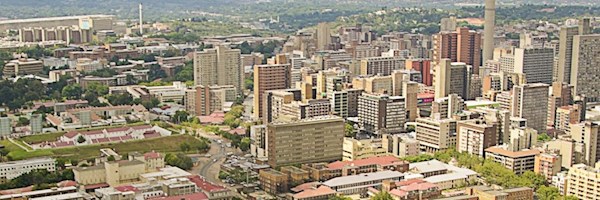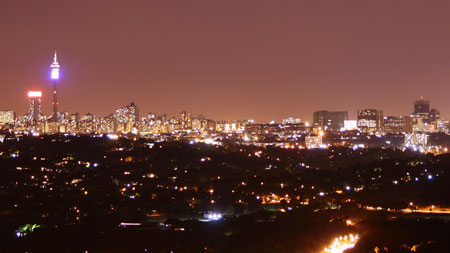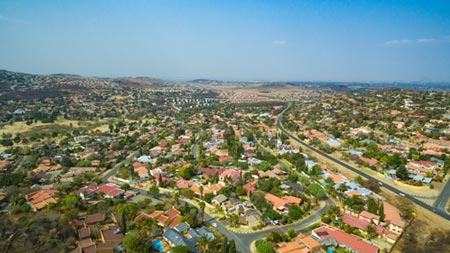Affordable homes and an increase in first-time buying is expected to boost the property market in the province this year.
Although many Pam Golding Properties (PGP) agents experienced slower activity in the fourth quarter of 2017, the majority (51.5%) anticipated a strengthening in activity in the first quarter of 2018, according to the latest PGP Estate Agent Survey.
In Q4 2017, PGP agents identified the political uncertainty (26.9%) and tough economy (27.4%) as the key obstacles to activity in their areas along with lack of affordability (18.4%), difficult accessing finance (13.8%) and shortage of stock (13.6%).
Sandra Gordon, PGP Research & Market Analyst explains that in the wake of the political transition these obstacles will be removed and the outlook for the housing market will improve as economic activity gradually strengthens and employment is created.
“The recent political transition is likely to herald a significantly more positive era for the local housing market and investors have responded favourably, with Goldman Sachs naming South Africa the emerging market story of 2018. “Renewed confidence from both foreign and local investors has seen the rand strengthen sharply while the country’s economic growth prospects have already started to improve,” says Gordon.
She notes that from the survey findings, PGP agents are more optimistic about the outlook for the housing market in 2018 – with 62% anticipating prices in their areas will increase by up to 5% this year. However, the optimism generated by the recent political transition may well result in the housing market surprising on the upside this year.
How old the typical first-time buyer is
Gordon says demographics is a key source of demand and in South Africa, the typical age of the first-time home owner is 34 years according to ooba. Census data reveals that approximately two thirds of South Africa’s population is below the age of 35 years – suggesting strong demand from first-time buyers for the next decade or so. “This provides a solid underpinning for the housing market and makes it easier for people to sell their homes and move up the property ladder.”
First-time buyers are an increasingly important force in the market – with ooba showing that in recent years, nearly 55% of the mortgages extended were made to first-time buyers. This declined in recent years due to the weak economy but is likely to gradually rebound now in the wake of the political transition.
According to Lightstone, first-time buyers remain a key factor in Gauteng and recent political developments should benefit the Gauteng market because over the past 12 years, half of all first-time buyers bought property in Gauteng – not only because of more plentiful job opportunities but also because homes are generally more affordable compared to the Western Cape.
“Since first-time buyers are typically more sensitive to the prevailing economic environment (as they are generally more reliant on mortgages), the improved economic prospects this year are likely to unleash pent-up demand from this sector of the market,” says Gordon.
In Johannesburg, there has been a noticeable uptick in enquiries, sales activity and show houses, with a number of potential buyers now more comfortable committing to paper, notes Rupert Finnemore, PGP Gauteng Regional Executive.
“With improved consumer confidence and general improvement in sentiment, we expect to see more buyers coming into the market – it is after all, still a buyers’ market with good deals to be had,” says Finnemore.
The areas that should show the best growth
He points out that locations such as the greater Fourways, Bryanston and Randburg areas, which offer a diverse range of properties to suit all budgets, will continue to see demand – particularly from first-time buyers looking to enter the property market.
Many first-time buyers who are young professionals, young families or couples who have just moved in together buy into sectional title units where they can buy homes for priced in the early-R1million. In Pineslopes for example, average prices range between R1 million to R1.2 million for a two bedroom and one bathroom unit.
“Compared to other areas in northern Johannesburg, Fourways is very established with many affordable homes. The recent developments, both residential and commercial make it a desirable area to buy into.”
The Parks area (Parkwood, Parktown North, Parkview and Parkhurst) is also seeing a number of first-time buyers lured by the lifestyle aspect and convenience of these suburbs. Upper Parkwood is in great demand because of its close proximity to Rosebank which is experiencing unprecedented developments. Average property prices are between R4 million and R5 million with properties priced at R7 million selling very well.
“Buyers are attracted to The Parks areas because there are a number of good schools within the area and it is close to major roads as well as amenities including shopping centres and hospitals.”
Midrand is another popular area for first-time buyers and investors alike with prices starting from R500 000. It is also diverse with entry level homes in secure complexes to some luxury homes in suburbs including Halfway Gardens, Kyalami & Lifestyle Country Estates, Vorna Valley, Noordwyk, Erand Gardens and Waterfall Country Estate among others.
“The sectional title market in Midrand is expanding rapidly with lots of new developments popping up to meet demand, especially in suburbs such as Noordwyk and Erand Gardens. “Property here is affordable for young people and is also a great market for investors.”
Nationally, PGP agents said the price difference between listing and selling rose slightly in the final quarter of 2017 with 30.3% of agents indicating that prices were reduced by between 11-15% before sale compared to 23.3% in the third quarter.
Finnemore says properties that are priced correctly will always sell, regardless of the price bracket. However, he notes that in some areas, there is still a huge gap between asking and selling price which may explain the oversupply in some markets.
Regarding stock levels, Gauteng had a 33% shortage compared to 44% in the Western Cape. Gordon points out that there is limited land available for new residential developments in the Cape and the geographical constraints of ocean and mountain limit the possibility for growth in the Cape metro.
“This makes Cape Town an “expensive” city. Johannesburg, in contrast, is an expansive city – with considerable scope for growth – particularly in the north,” says Gordon.
She adds that because of availability of land and the fact that Gauteng has delivered more homes than other provinces, this plentiful supply has tended to act as a dampener on how fast prices in the metro have grown.


